I don’t know many landscape photographers who like wind. Wind gyrates flowers and trees, making it hard to get sharp photos. It ruffles lakes, killing reflections. Wind can even shake a tripod-mounted camera, blurring images (especially with telephoto lenses). And it’s generally unpleasant to be out in the wind – especially when it’s cold.
But sometimes wind creates interesting opportunities. On the leeward side of a mountain range (usually the eastern side), or on isolated mountain peaks, wind often creates lenticular clouds, which can be incredibly beautiful and photogenic.
The word “lenticular” derives from “lens,” and these clouds do often look like lenses. They sometimes resemble flying saucers. They’re also sometimes called wave clouds, as they can form long, wave-like formations, or a series of waves in the air.
When strong winds push moist air over mountains, that air rises and cools, causing some of the moisture (water vapor) to condense into tiny water droplets and form clouds. With strong winds running perpendicular to a mountain range, the terrain actually creates standing waves in the air downwind from the peaks, almost like the standing waves of a rapid. Those waves are usually invisible, but with enough moisture lenticular clouds will form at the top of a wave, or several waves, revealing the pattern. And since the clouds are created by terrain, they can last for hours, forming and reforming in the same spots.
The eastern side of the Sierra Nevada is a perfect factory for lenticular cloud creation. It’s a long, tall, mountain range, set perpendicular to the prevailing winds. Extended lenticular cloud formations are common enough on the eastern side of the Sierra that they’re known locally as Sierra wave clouds.
Claudia and I were in Lee Vining (on the eastern side of the Sierra near Mono Lake) recently for our Starry Skies Adventure workshop. The two days prior to the workshop were quite windy. Mornings would start out calm, but by nine or ten o’clock we’d see lenticular clouds starting to form, and we didn’t need a forecast to know it would be a windy afternoon. As the day progressed the clouds grew, and lingered until sunset, adding color to the cloud designs. On the second day (June 18th), a long “Sierra wave” formed. We could see it extending from just north of Mono Lake well to the south. People saw it as far south as Lone Pine.
Here’s a selection of images from those two windy evenings. I typically use clouds as a complement to a larger landscape, but these lenticular clouds were interesting enough and beautiful enough to sometimes be the main subject, with just a bit of land included as an accent. And while I don’t typically like windy days, these clouds were a lot of fun to photograph.
— Michael Frye
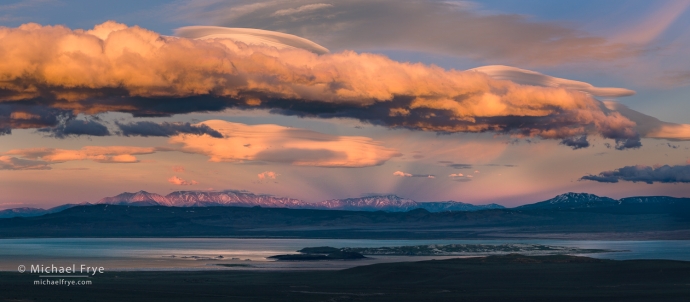
Clouds, Mono Lake, and the White Mountains with anti-crepuscular rays, eastern Sierra Nevada, California
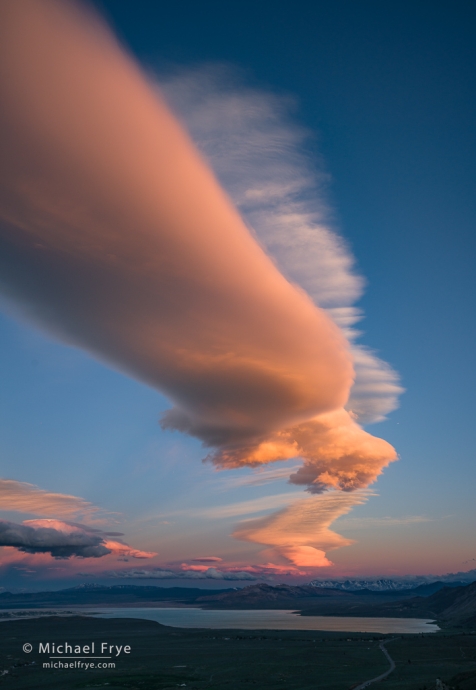
Lenticular “Sierra wave” cloud over Mono Lake, eastern Sierra Nevada, California. This cloud was seen as far south as Lone Pine.
Related Posts: Mono Lake; Lightning Storm at Mono Lake
Michael Frye is a professional photographer specializing in landscapes and nature. He is the author or principal photographer of The Photographer’s Guide to Yosemite, Yosemite Meditations, Yosemite Meditations for Women, Yosemite Meditations for Adventurers, and Digital Landscape Photography: In the Footsteps of Ansel Adams and the Great Masters. He has also written three eBooks: Light & Land: Landscapes in the Digital Darkroom, Exposure for Outdoor Photography, and Landscapes in Lightroom: The Essential Step-by-Step Guide. Michael has written numerous magazine articles on the art and technique of photography, and his images have been published in over thirty countries around the world. Michael has lived either in or near Yosemite National Park since 1983, currently residing just outside the park in Mariposa, California.

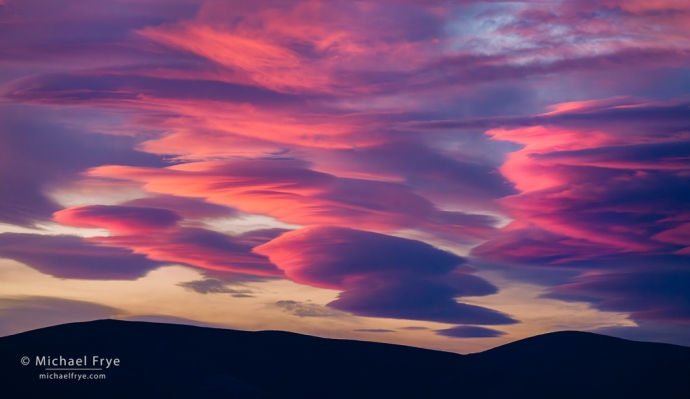
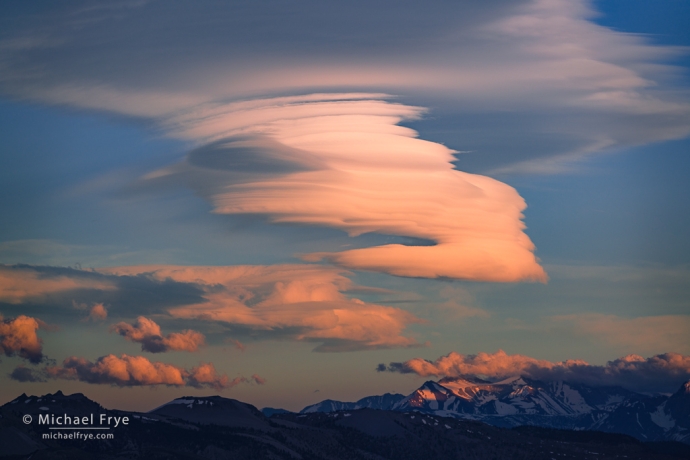
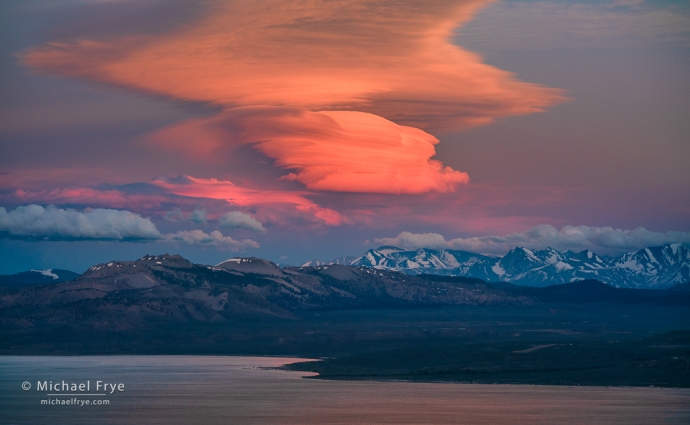








Beautiful! Thanks, Michael. These clouds look so majestic and mysterious at the same time. Gotta love the Eastern Sierra in so many ways! No doubt where your focal point was here. Take care and stay cool.
Thanks so much Bob! Got the AC on, so it’s all good. 🙂
Fantastic, Michael. As always!
Thanks very much Bill!
Actually, I think it’s more accurate to say that both “lenticular” and “lens” derive from the Latin for “lentil”, which is “lens”; in Latin, “lenticula” means “a small lentil”. So … Thanks for the tasty serving of little lentils!
Thanks for the linguistic clarification Mark!
Thanks for sharing, Michael. And for the education on clouds and wind. Like in life, a few clouds and wind can create something beautiful.
P.S. – Your photography guide to Yosemite was super helpful to me, especially when I was unfamiliar with the area, and had limited time there. Thanks for a great book!
Thanks Nathan! And I’m glad you found the book helpful.